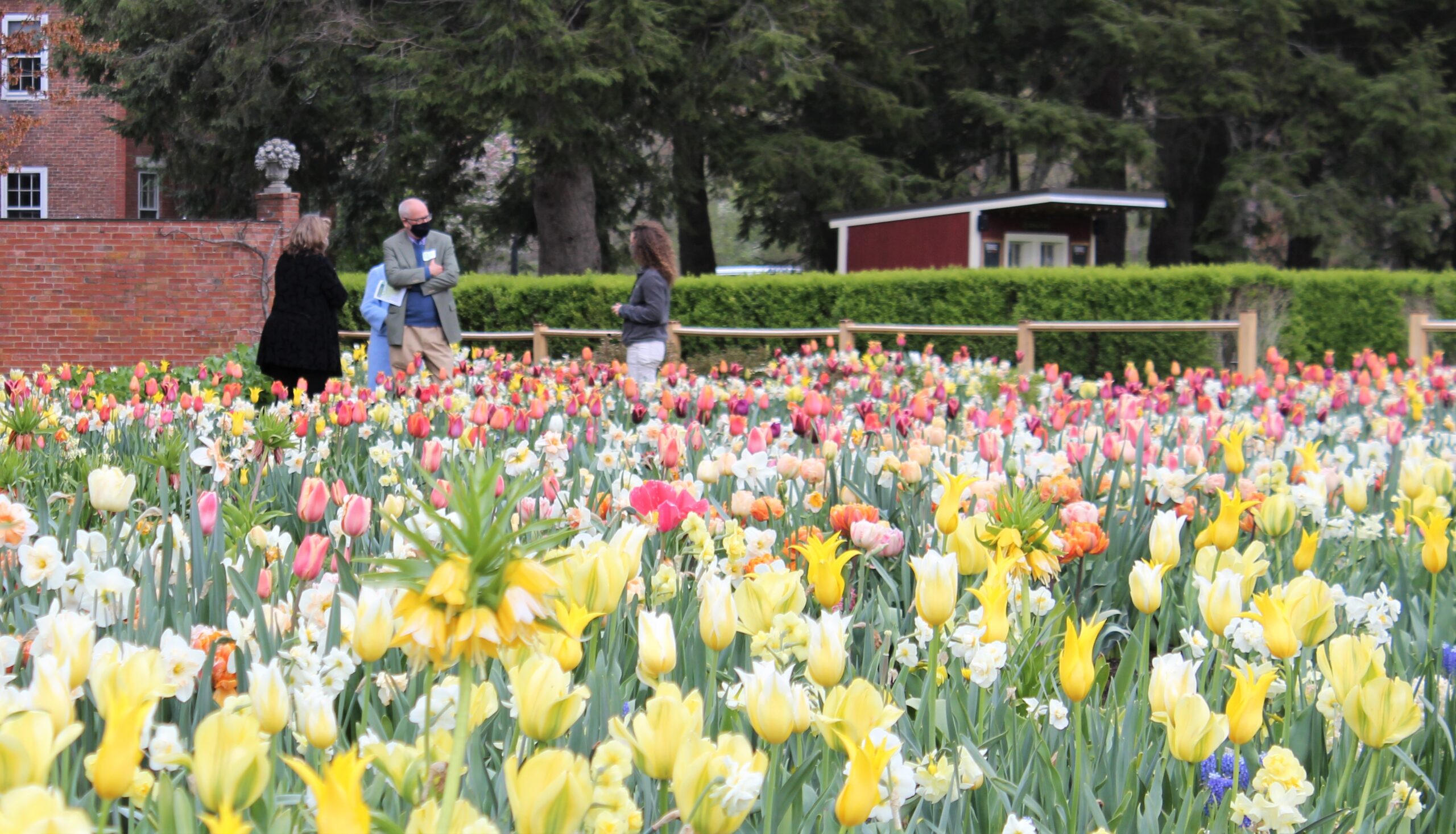Sharing Spring
Founders Circle members provide crucial year-round support for so many aspects of our work, from saving new landscapes to preserving our most treasured traditions, such as the annual spring bulb shows: Bloomfest at Stevens-Coolidge House & Gardens in North Andover, and the Daffodil and Tulip Festival at Naumkeag in Stockbridge. With spring right around the corner, our gardens will soon be bursting with color from yellow daffodils, pink hyacinths, white tulips, and many others.
To celebrate you, our dedicated Founders Circle members, we are offering exclusive opportunities to visit our two garden shows and invitations to special events to meet and chat with fellow Founders Circle members and Trustees staff, including our new President and CEO, John Judge. See below for event information and how to sign up.
Learn more about how your Founders Circle membership supports our work and get a glimpse behind the scenes into the making of an event like BloomFest by reading our Q&A with Trustees Director of Horticulture, Joann Vieira, below.
Q&A with Trustees Director of Horticulture, Joann Viera
Q: What is your process for designing and arranging a garden?
A: First, during the season of bloom last year I stood in each garden and considered the impact of the display. Did the plantings achieve what I’d envisioned? Were the plants healthy and well suited to the soil and light conditions in the garden? Were the color combinations successful, harmonious? Did the colors fit the setting (not clash with furnishing or trees and shrubs in bloom?)? Were the blooms staggered enough over the BloomFest period and yet still impactful? Were there things we could do better or differently? What was the visitor response?
Looking back over those notes and observations I set out to improve on the previous year and make the color schemes different so that it feels like a completely different display. For example, last year I created custom blends of tulips, Narcissus, and grape hyacinths in combinations that I dubbed “Hello Yellow,” “Sunrise,” and “Sunset.”
After the bulbs arrived onsite and were inventoried, garden volunteers helped combine the bulbs in well mixed batches, then repackaged them in crates while they awaited planting. When planting time arrived the bulbs were all laid out prior to planting to ensure we get the spacing right and have the right quantities for each color mix.
Once they were all laid out and checked for spacing, our staff, volunteers, and contractors dug in and planted each bulb by hand. Some areas, like the French Garden and new Cutting Garden, are so large that most of the bulbs are planted by contractors. The more intimate and intricate gardens, like the Rose Garden, Perennial Garden and old cutting beds, are planted by staff and garden volunteers.
Q: Tell us a bit about this year’s arrangement.
A: This year the French Garden will be filled with tulips in shades of pink with a pair of purple ribbons winding through and crisscrossing the garden, the main paths lined with fragrant pink hyacinths.
The new Cutting Garden has bands of color that intensify from yellow to orange and finally vivid red at the center of the garden.
The Rose Garden will have pink and white tulips with a band of fragrant pink hyacinths. The old cutting beds will have a mix of the bulbs found elsewhere in the displays that will be used for the cut flower CSA.
The Promenade is the same as last year—undulating ribbons of white narcissus and summer snowflakes follow the earlier blue Siberian squill and glory of the snow. The waves of grape hyacinth on the landforms are the same as last year and should improve each year as the bulbs mature and increase the blooms.
New this year are tulips planted in the beds under the metal tunnels, Narcissus planted under hornbeam hedge near the new cutting garden, and trout lilies in the Entry Garden beds.
Q: How many people and how much time does it take to bring BloomFest to life?
A: We have one professional horticulturist, a seasonal assistant to the horticulturist, three stewardship colleagues who tend to the turf and hedges and help out periodically in the gardens, and a wonderful group of 10-15 garden volunteers who help at least three hours a week during the growing season.
I’d estimate about 1,000 hours—60 hour of planning, plant selection, and ordering; about 500 hours of inventorying, sorting, mixing, laying out, and planting; 40 hours in producing plant labels and descriptive information; about 100 hours in applying mulches and repellants, and about 200 hours in removing bulbs after bloom ends.
Read on to learn more about our special Founders Circle events coming up this spring and summer!
